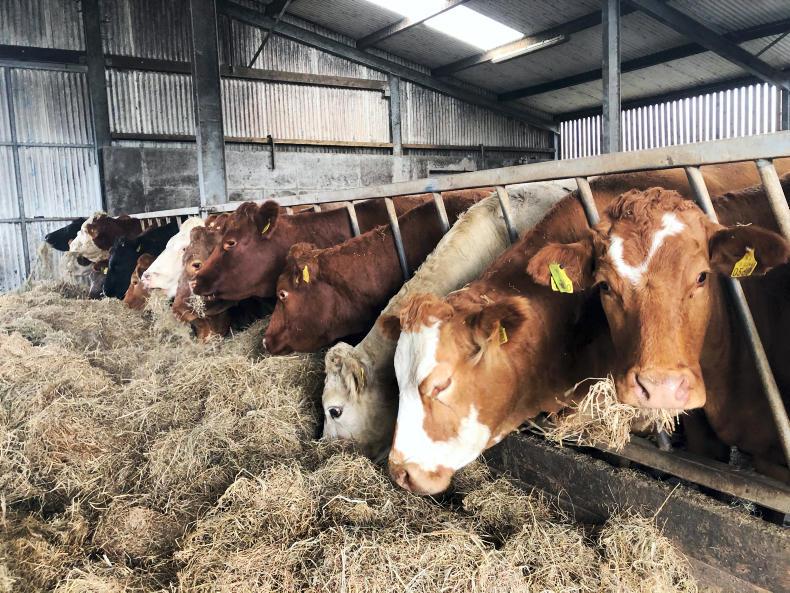Stocking rate and output (kg of liveweight per hectare) are two key drivers of farm profitability.
Stocking rate
From a baseline of 1.7LU/ha in 2016, the BETTER farm group average is currently sitting at 2.15LU/ha – a 32% jump in three years.
With the average farm size coming in at 54ha, the rise in stocking rate is the equivalent to an extra 25 cows, 60 weanlings or 35 store cattle.
The key to driving stocking rate has undoubtedly been grass. A combination of better grazing infrastructure, grass measuring, nutrient planning and reseeding has paved the way for increased grass production and longer grazing seasons. More stock can now be carried on the same amount of ground on many of the farms.
Output
Carrying more stock then corresponds to pushing more kilos of beef out the gate. In 2016, output was at 572kg of live weight per hectare.
A large gain – 26% - came immediately in year one.
Interestingly though, the poor year weather-wise in 2018 didn’t really take effect until 2019 and so output climbed by a further 17% between 2017 and 2018 to 841kg/ha.
Factors like calf mortality and loss of thrive which were witnessed in 2018 didn’t actually bubble to the surface until 2019 and thus, output was stagnant at exactly 841kg/ha once again.
Coming up
Inside this week’s Irish Farmers Journal we analyse how variable costs and overall margins changed over the course of the three-year BETTER farm beef challenge.
We also take a look at net profit on the 23 BETTER farms and show just how much of an effect the BEAM and BEEP schemes had on our farmers’ pockets.






 This is a subscriber-only article
This is a subscriber-only article










SHARING OPTIONS: